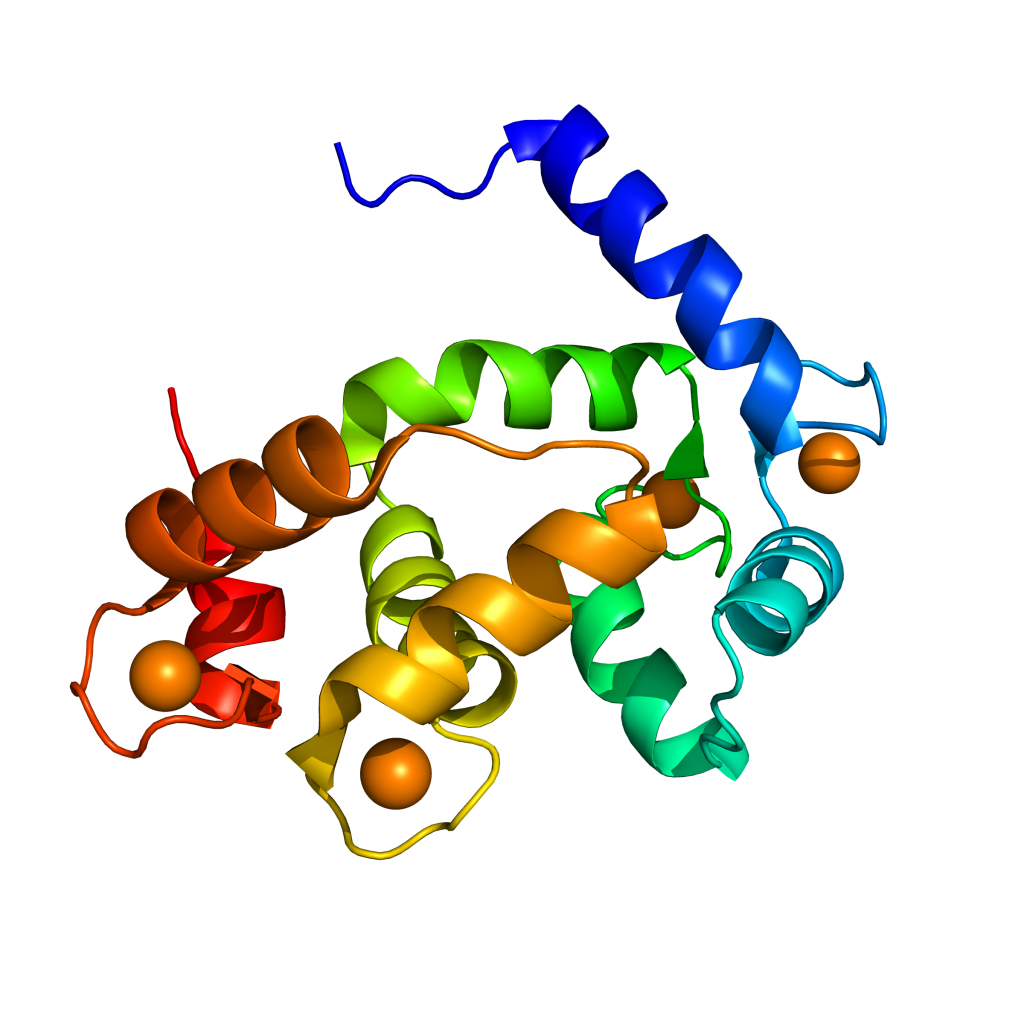Additional information
| Shipping in Dry Ice | yes |
|---|---|
| Labeling | 13C15N |
| Qty | 1 mg, 5 mg, 10 mg, 20 mg |

Human, recombinant, N60D mutant
Full length, UniProtKB accession P62158
MW = 16.6 kDa
CAT # G02CLM60cn
| Catalog n. | Labeling | Qty | Price |
|---|---|---|---|
| Request a quote | |||
| Request a quote | |||
| Request a quote | |||
| Request a quote | |||
| VAT not included | |||
For any special request or bulk quantities Click Here
| Shipping in Dry Ice | yes |
|---|---|
| Labeling | 13C15N |
| Qty | 1 mg, 5 mg, 10 mg, 20 mg |
Description
MW=16.6 kDa calculated. Full length Calmodulin with the N60D mutation, cloned from human cDNA, expressed in E. coli. The protein consists of the human Calmodulin (residues 1-148, UniProtKB accession P62158) with a N60D mutation.
Sequence
10 20 30 40 50
MADQLTEEQI AEFKEAFSLF DKDGDGTITT KELGTVMRSL GQNPTEAELQ
60 70 80 90 100
DMINEVDADG DGTIDFPEFL TMMARKMKDT DSEEEIREAF RVFDKDGNGY
110 120 130 140
ISAAELRHVM TNLGEKLTDE EVDEMIREAD IDGDGQVNYE EFVQMMTA
Available mutants
WT – CAT # G02CLM01
Purity
> 95% by SDS-PAGE. The protein is observed, in denaturing conditions, as a single band migrating at a molecular weight between 14.4 and 18.4 kDa.
Supplied as
1.0 mg/mL solution in Tris 20 mM pH 8.0, NaCl 150 mM, CaCl2 2 mM, Complete Protease Inhibitor Cocktail EDTA-free (Roche). The concentration is calculated by the analysis of the absorbance at 280 nm (ε280= 2980 M-1cm-1 calculated). It is strongly recommended to add 1 tablet of Complete Protease Inhibitor Cocktail EDTA-free (Roche) in 1000 mL of buffer in case of buffer exchange.
Storage
-20°C. The protein is stable at 25°C for several hours. After initial defrost, aliquot the product into individual tubes and refreeze at -20°C.
Avoid repeated freeze/thaw cycles.
References
Bertini, I. et al. Proc. Natl. Acad. Sci. 101 (18), 6841-6846 (2004).
Ehlers, M.D. & Augustine, G.J. Nature 399 (6732), 105-108 (1999).
Kuboniwa, H. et al. Nat. Struct. Biol. 2 (9), 768-776 (1995).
By continuing to use the site, you agree to the use of cookies. more information
The cookie settings on this website are set to "allow cookies" to give you the best browsing experience possible. If you continue to use this website without changing your cookie settings or you click "Accept" below then you are consenting to this.